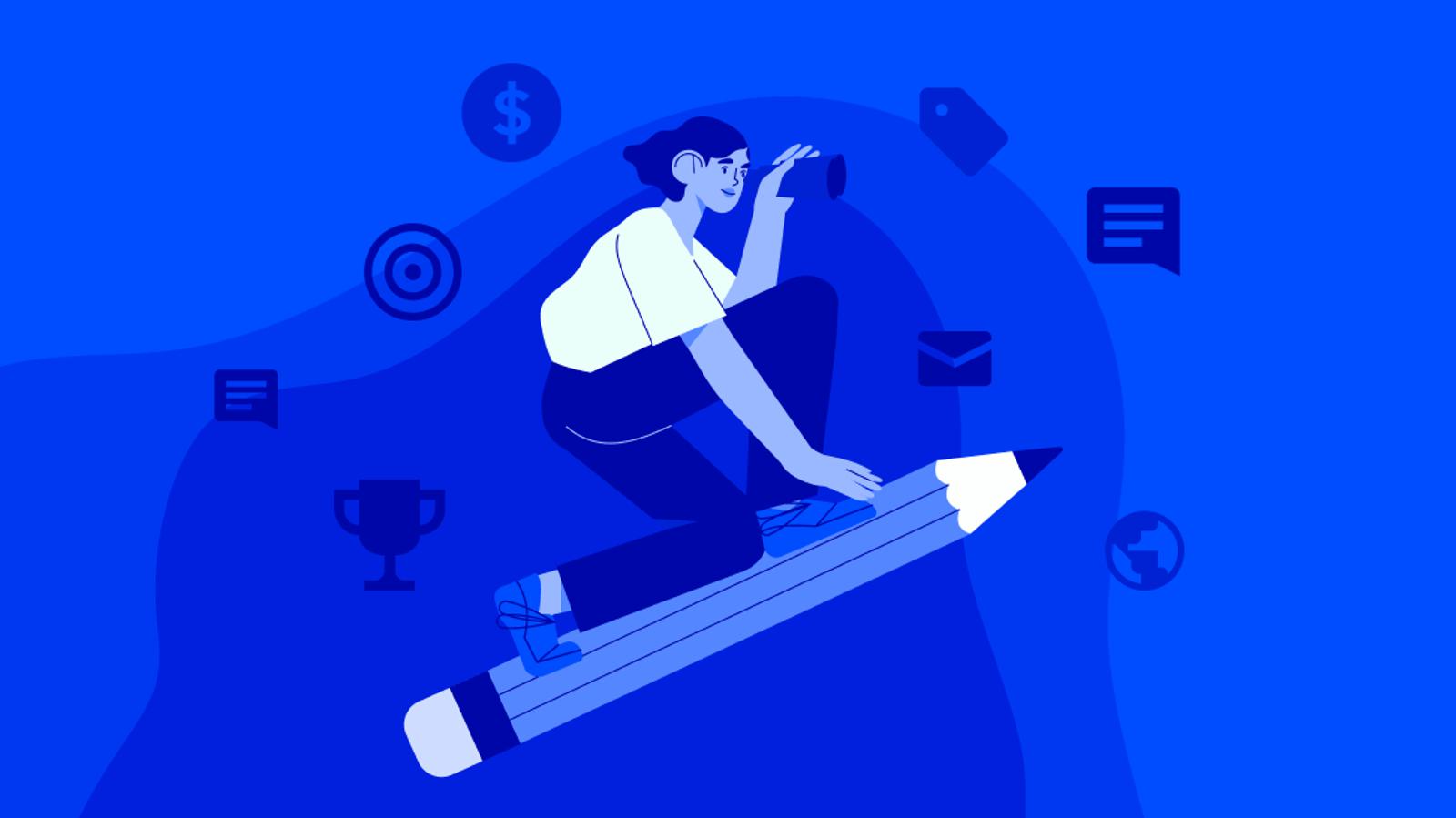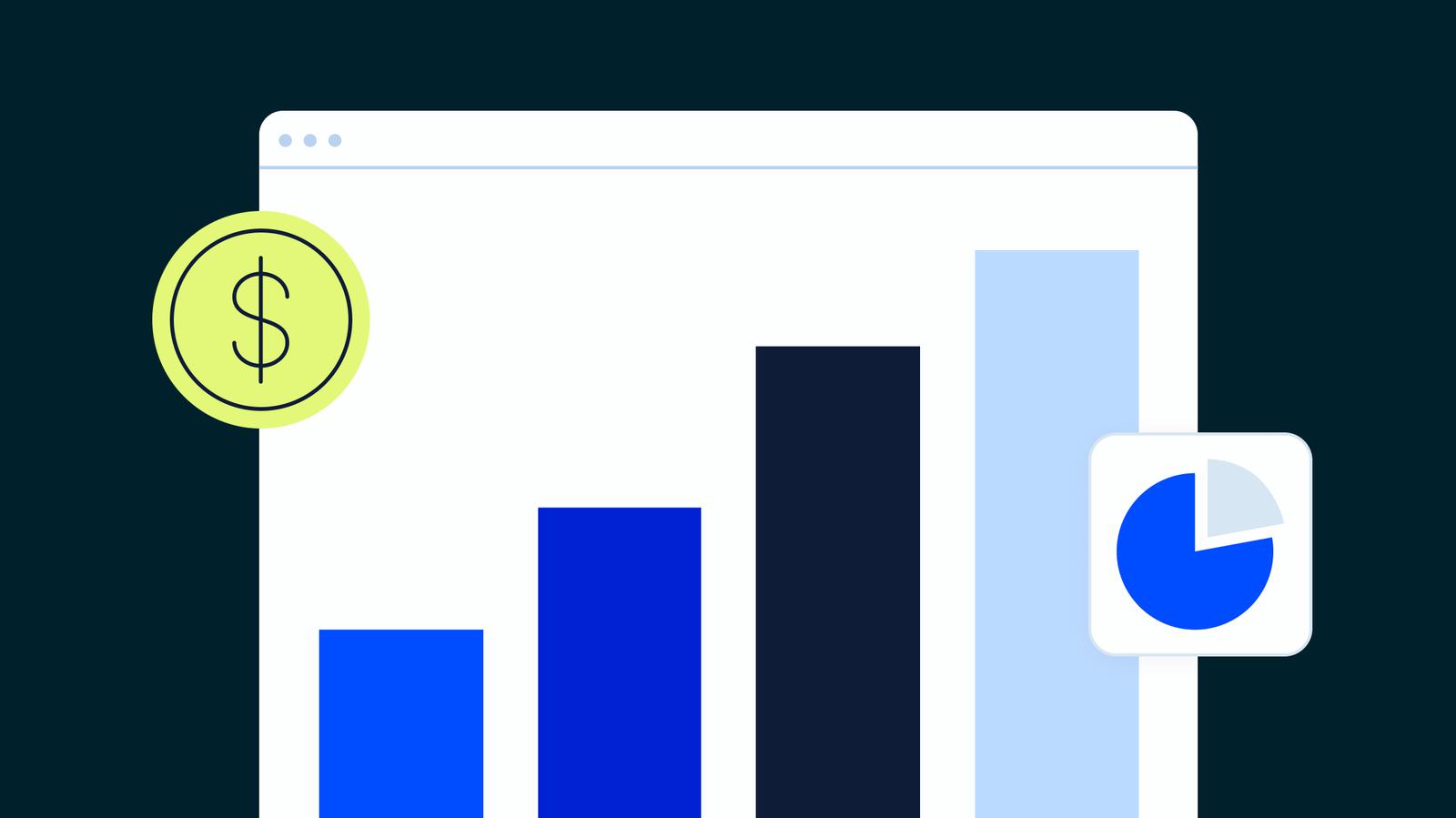“How can I drive traffic to my landing pages?”
There are paid and unpaid channels to help you drive traffic to your landing page. It’s likely that you’ll use a mix of both, so here are all of your options:
- Reach people you already know with email marketing
- Optimize your landing page for SEO
- Let paid search advertising pave a direct road to your landing page
- Reach out to influencers
- Repurpose existing content
- Harness the power of public relations
- Enjoy the [free]dom of social media
- Promote your landing page through branded contests and events
- Start conversations in online communities and forums
- Use thank-you pages
How do you know what marketing channels are going to drive the traffic that you want to your landing page?
Should you use a marketing net of every method to get people on your landing page? Not necessarily. But when you want new customers, it doesn’t hurt to try a few different traffic channels.
Which one you choose will depend on how you can best reach your target audience. How do you already communicate with them? Social media? Email? Paid search?
Here’s a snapshot view of your options, otherwise known as the digital marketing trifecta:

Landing page traffic is not a one-man job. Multiple channels work together. (Source)
Want to know how to drive traffic to your landing page? This post will cover the complete list of top 10 traffic channels for how to drive traffic to your landing page.
1. Reach people you already know with email marketing
Guess what – some of the people you want to land on your landing page are probably people that you already know.
Your landing page will attract new visitors that don’t exist on your email lists, but some of the people in your landing page target audience probably do.
When you create a landing page, it’s crafted from an email campaign aimed at a segmented audience, enabling precise targeting and transforming the landing page into an effective onboarding tool.
How?
You can create further segments of those lists using tags in your automated email marketing platform of who you want to know about the page.
A segment can be along the lines of:
“Contact has opened X type of email in the last 3 months.”
And a creative email campaign to existing contacts can drive more traffic (and conversions) to your landing page than you might have thought possible.
Dell sent an email campaign to drive traffic to a specific landing page for their new computer, the XPS 12 Convertible Ultrabook.
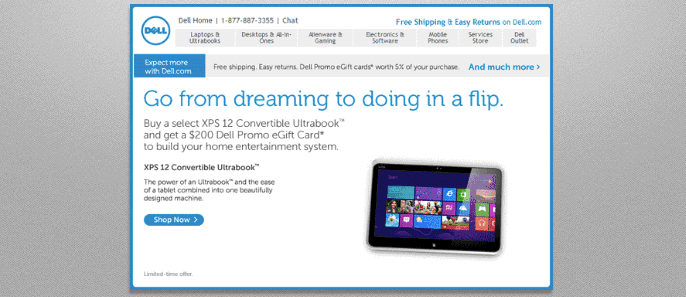
- 6% increase in open rate
- 42% increase in click rate
- 103% increase in conversion rate on the landing page
- 109% increase in revenue
Your landing page offer has an audience in mind, and the first place you should look to make that offer is on your email contact list.
The best part is that your contacts can help do even more outreach for you. The email campaign behind your landing page can offer incentives to share the link with friends. Depending on the offer of your landing page, an incentive can include:
- A product discount code
- A free content download
- Beta access to a new software feature
An email to a segmented group of contacts can include links to content and pages that support the objective of the landing page. Be mindful of the frequency and volume of emails you send.
2. Optimize your landing page for SEO
What is your primary goal for your landing page? Do you want your landing page to rank in search or convert?
Probably both, but for people to get to a conversion stage, they need to be able to find your page. Optimizing your landing page for SEO can help with this.
However, this can be a trickier approach.
Traditionally, a landing page is not filled with a lot of text. Your landing page should deliver a key message quickly and get people to take action. Less text means less opportunity for keywords that can help optimize your page.
But, here’s the good news – there’s still a way to do it!
Let’s say you create an SEO-focused landing page to sell personal finance software.
Your conversion-focused landing page needs to target keywords that someone looking to buy would search, like:
- Personal finance software
- Budgeting software
- Accounting software
People who search for a word like “personal finance software” are ready to buy, and Google can tell. When your landing page is optimized for SEO related to that conversion-focused keyword phrase, you can target even further than that with words that describe what a solution does.

How much fun money will I have after all that bill-paying? (Source)
For instance, more specific keywords like “how to budget” or “how to save money” can then direct people to a specific landing page that has a gated content guide on best ways to save money.
3. Let paid search advertising pave a direct road to your landing page
What is paid search advertising?
Paid search advertising, often commonly referred to as PPC (pay-per-click) or SEM (search engine marketing), is a type of advertising where you pay a fee for each time that a user clicks on one of your ads.
Paid search ads look like this:
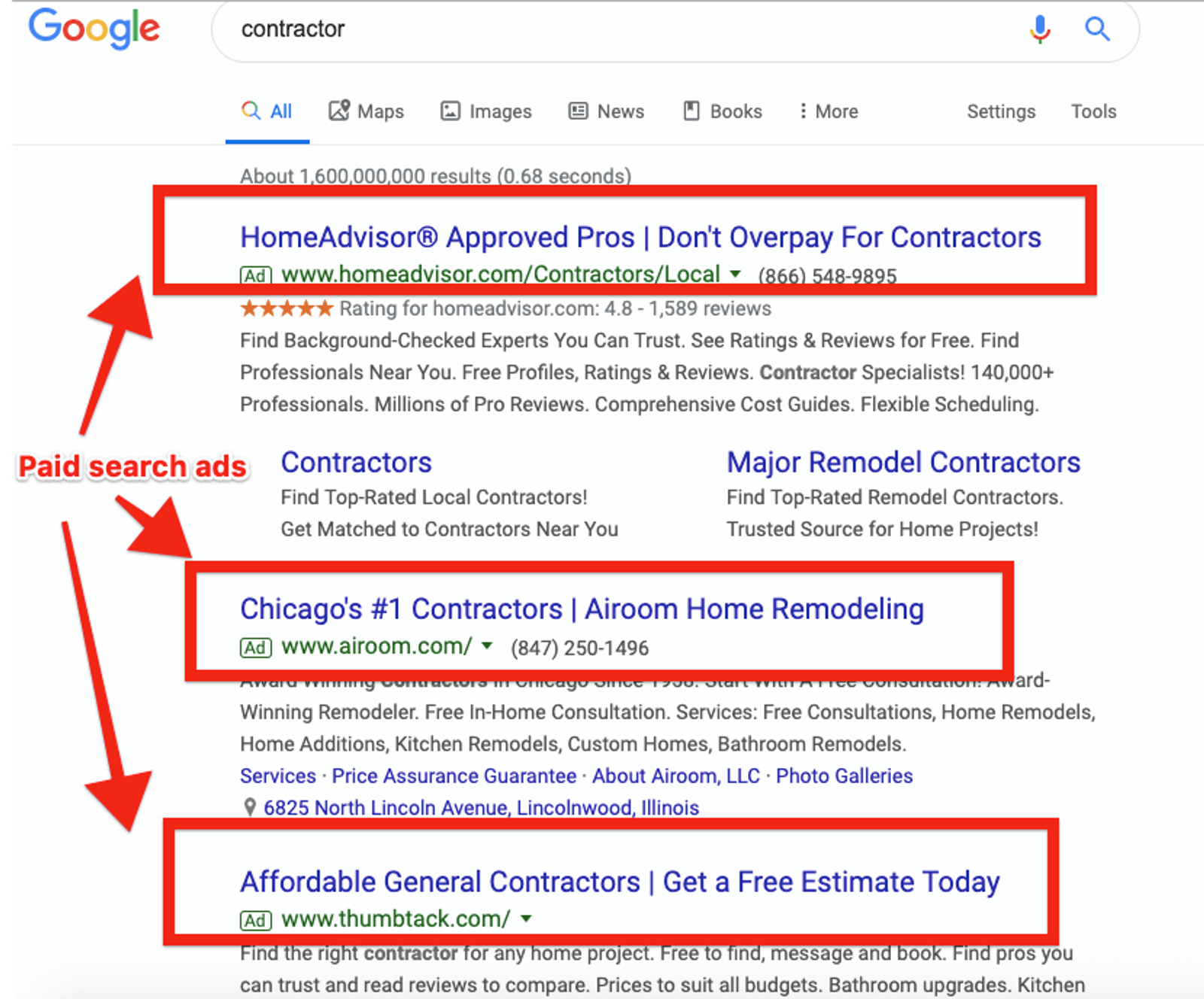
Different key phrases show different ad results.
There are multiple paid advertising platforms to share your landing page offer. You can have text ads appear above people’s searches on Google.
Where can you set up paid search ads? There are lots of places you can implement them, but among the most popular are Google Ads (formerly known as AdWords). With Google Ads, there are several ways to bid for your ads, depending on what matters most to you and your business. Most advertisers focus on clicks, impressions, conversions, or views (for video ads).
Why use Google Ads?
- They’re scalable. That means you don’t need to make ten times more effort to get ten times more leads. You can increase your PPC budget and your leads and profits will increase accordingly.
- They’re measurable. Google Ads lets you see key information about visitors to your page, like what they searched to find your ads. Google Ads lets you see a more granular level of data insight from PPC metrics like cost-per-conversion, conversion rate, and click-through-rate.
Your paid search ads should make it clear to a visitor what a click will get them. Unclear or unspecific copy can cost your business a lot of money AND qualified leads. Copy that promises one thing to the people you want and delivers something different upon clicking means you lose the qualified leads.
This paid search ad from Upwork is a good example:

No muss, no fuss, just hire the best. (Source)
This ad uses a second great headline to reinforce the call-to-action in the main headline, and it shares a simple message – get more done fast for less. Sold. This kind of paid ad can be clickable gold for your landing page traffic.
4. Reach out to influencers
Have you ever made a decision because someone else made the decision first?
You know you have.
Did you know that content shared by influencers gets more than 8 times the engagement rate of content shared directly from businesses? Imagine that level of attention for your landing page.
Influencer marketing works because people trust social proof.
In his book, Influence: The Psychology of Persuasion, Robert Cialdini talks about the psychological and social phenomenon of social proof, where people copy the actions of others in a given situation.

When someone shows that they trust a product, it reassures other people that they can trust it too.
For example, if your landing page sells a specific, limited-time product, an influencer can share their experience with it on social media.
Social proof works best if it comes from someone your audience trusts. An influencer can promote your landing page content to help drive traffic. It builds your credibility when someone else credible endorses you.
5. Repurpose existing content
“It’s not the best content that wins. It’s the best-promoted content that wins.” – Andy Crestodina
Of course, it doesn’t hurt if the content is great too...but one way to promote your landing page content is to repurpose older, related content into new types of content.
What’s repuposed content?
Repurposed content is content that has been altered from its original form to serve a different marketing goal. Repurposed content typically retains the message and core ideas of the original piece of content. You can repurpose content into a different format (e.g. changed from written to infographic or video) or revised to meet the needs of a different target audience.
Repurposing content has two key benefits:
- It saves time on content creation
- It helps you reach new groups of people, like adding a section of content that appeals to an additional audience
...Like the people who you want to visit your landing page.
How does repurposed content help promote your landing page?
When you repurpose content, you can add or alter sections to include language that talks about your landing page content, or include an inline form that takes them there.
Your landing page might be for starting a free trial or downloading more in-depth content related to a shorter blog. To get someone on that landing page, you can include things in a piece of repurposed content like:
- An inline form that goes to a free trial first steps landing page
- A landing page with info about a related gated content piece
The content you repurpose is a great way to drive traffic to your landing page – as long as it’s high-performing content. Certain content, like blogs, often have the same problem as a landing page; getting traffic to either of them is hard.
You can absolutely create new content to complement your landing page, but new content might not be the biggest traffic earner. Instead draw some traffic from other high-performing content, like...
- Blogs
- Podcasts
- YouTube series

People enjoy content in different mediums, and you can use this to your landing page’s advantage.
This blog actually came from a different piece of content – a recorded podcast episode. By turning the podcast content into a customer story article, the ActiveCampaign blog got more traffic.

The original content source can also get a traffic boost with repurposed content. Traffic for everyone!
Repurposed content can work the same way for your landing page. You can include links to landing pages into repurposed content – like a blog about a previous podcast episode.
You can promote repurposed content that lives on your landing page through other channels like social media and organic search to drive more traffic to your page.
6. Harness the power of public relations
Your future customers aren’t the only people who could be interested in your landing page. Publications need content just as much as you need customers, and the right one can promote your landing page.
Let’s say that your landing page promotes a rich piece of gated content, like a research guide. You can pitch to publications relevant to your industry to promote the research guide and include a link to the landing page that it lives on.
Writing a pitch to promote your gated content is easier than you think. All it requires is:

For a complete guide on how to write a pitch, check out this post that explains all.
Does this work? Yes! After all, how did the first-ever stories get passed around? Word-of mouth.
Stories about your new products or industry thought leadership pieces can all be great drivers for a user who hasn’t heard of your company before and wants to learn more.
Media coverage is a great way to drive traffic to your landing page and increase your brand’s visibility in your industry.
7. Enjoy the [free]dom of social media
The best things in life are free.
Good news:
- Social media is everywhere
- A ton of people are on multiple platforms
- It’s free to sign up
- It’s easy to use
Win, win, win, and...wait for it...win!
And you can use all of these social media wins to drive targeted traffic to your landing page.
One survey found that the 3rd biggest reason to use social media is to help drive traffic to your web pages, right behind boosting brand awareness and strengthening customer relationships.
You can optimize a landing page for SEO, but landing pages aren’t known for ranking high. That’s why platforms like social media are great for getting the link to your landing page in front of the right people.
Bonus – if you want to get even more from your social media, you can pay for ads to appear on different platforms, like Facebook Ads.
You can also make use of social media platforms to display paid ads, like:
- Snapchat
- YouTube
But an organic post can still have a big impact on your landing page traffic goals (like this one on LinkedIn).
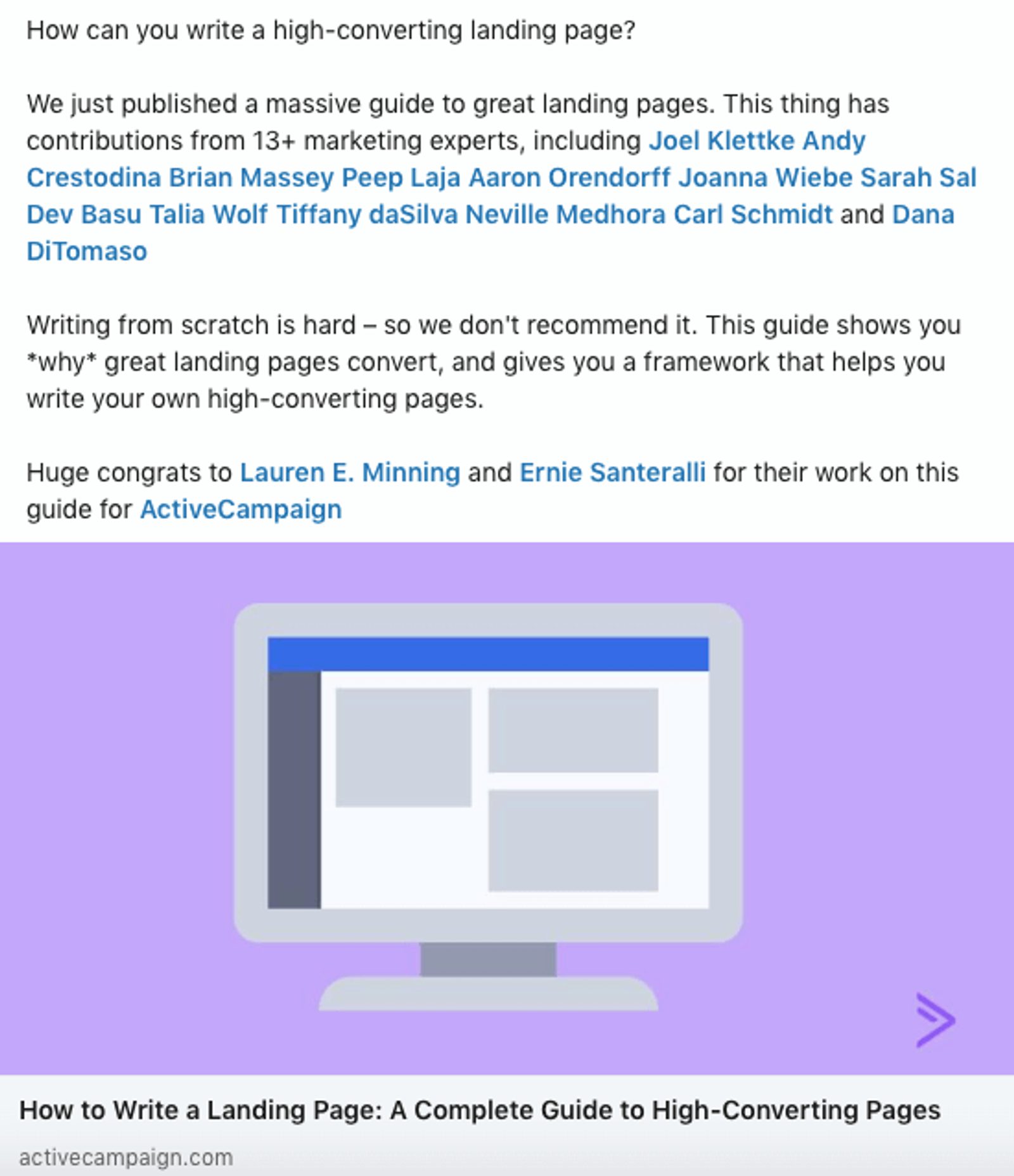
This LinkedIn social post about high-converting landing pages promotes highly useful content You can create a landing page for content like this and make it gated.
And you can do more with social media than just a standard post to share your landing page. You can do a live Twitter chat or Facebook Live webinars to get the word out.
For example, you could do a Facebook Live talk about the best days and times to post on various social media platforms, you could tease a piece of related landing page gated content (like a complete guide to best social media practices) and mention where to find it.
8. Promote your landing page through branded contests and events
67% of B2B content marketers consider event marketing to be their most effective strategy.
How? 2 ways:
- Advertising an event on social media or through paid ads that go a landing page about your event
- The event signup page or the contest entry page is a landing page
Competition and the promise of winning something can drive people to connect more with your brand – and that kind of drive at an event can lead people to fill out a sign-up form that you bring to an event.
A form that people fill out an event can be for:
- Scheduling a future intro call
- Give mailing info for branded mailers
- Signing up for a specific newsletter list
To drive traffic to your contest landing page, you can use traffic sources like paid ads and social media posts.
9. Start conversations in online communities and forums
You can also promote your landing page offer in online communities like Quora, Reddit, and Facebook groups.
Engaging in conversations on an online forum lets you:
- Establish your brand as a thought leader about a subject
- Build enough trust to get people to click on any links you include in a reply
And no, I don’t mean leave a comment on a Quora thread that says “check out this totally awesome landing page about X” with a link.
Why wouldn’t this work?
- People may not know who you are – why would they click on an unknown source?
- A random comment in a conversation thread is more likely to get ignored. People don’t like boastful promotional comments with no helpful context.
All of this leads to one thing: distrust. But trust gets people to your landing page — and makes them convert.
To get people from an online community to your landing page, you need to give context and convince them why you’re someone they can trust.
How does this drive traffic? Quora has 300 million monthly active users. That means the people you want on your landing page are likely to be on it looking for answers that you can give.
Plus, you can use Quora Ads to get even more exposure. Businesses using Quora Ads have seen up to 4x more conversions.
Join the conversation with thoughtful insights that relate to the theme of your landing page. If you have a landing page about a new product feature, find conversations about what problems people have that your landing page offer can help fix.
You can give away just enough detail in your comments to make people want to hear more, but not so much that you give it all away before they get to your landing page.
- You build your credibility in a comment
- Leave them wanting more
- Drop a link
- They click the link, and your landing page gives them the “more.”
10. Use thank-you pages
A thank-you page is a nice touch for any landing page. You want people to complete your call-to-action and when they finally do, a little acknowledgment goes a long way to build loyalty.
It’s also a great way to drive traffic to additional landing pages. A thank-you page is not only a place to show appreciation for new subscribers or customers but to share more useful information that leads someone to another helpful landing page.
You can use a thank-you page after a landing page that has:
- A form to sign up for a newsletter
- A form to download gated content
- A landing page that houses a feedback survey
This thank-you page from Optimizely appears after a visitor submits a form for a content download.

All of those additional content recommendations come with a CTA that can take someone to another landing page. (Source)
This Optimizely page thanks visitors for downloading an ebook. But the page doesn’t just thank the user; it directs them to other helpful content.
If you have another landing page that has a helpful guide to supplement their recent download, your thank-you page can include copy and a CTA linked to the landing page they can get it from.
“How do I start driving traffic to my landing page?”
If you’re a smaller business, using every resource in the world might not be an option for you. In that case, the best way to choose the traffic sources you want to start with comes down to two words:
- Free
- Feasible
You want to try more than one channel source to drive traffic, but don’t take on more than your finances and personal bandwidth can handle. Every traffic avenue you explore should have a reason for exploring it.
If you start with any channels, consider these 4 ways to drive traffic to your landing page:

If you can’t do everything, start with the most important basics.
- Email marketing: Tap into your built-in contact network and hook those people who you know will want what your landing page has to offer. And you can find an automated email marketing platform that fits your budget needs to easily send great emails to your contacts.
- Repurposed content: Everyone is looking for answers, and you can repurpose old content into new content that has them (and leads people to your landing page). This content can exist on a landing page or be optimized for organic search.
- Organic SEO: You can use your copy to make your landing page easy to find through organic search with SEO optimized copy. Look at what other people search for online about your landing page topic and pick up on key phrases to include.
- Social media: It’s free to sign up for and free to post, and has plenty of sharing opportunities between your followers and industry influencers.
Conclusion: How to choose the best channels to drive landing page traffic
To choose the best landing page advertising channels for traffic, don’t think about what the best ones are, think about who you want coming to your landing page.
Although the advertising methods you choose involve factors like budget, team bandwidth, and time, the most important consideration is the audience.
If you build a landing page to promote a thought-provoking, high-level ebook full of statistics meant for C-level executives, does it make the most sense to create a fun, social media post for Instagram? Probably not. You have to consider:
What type of landing page you have
Who your landing page is for
According to Oli Gardner, there are 3 main categories of landing page:
- Standalone landing pages: These include; Click Through, Lead Capture (Lead Gen or Squeeze Page), Infomercial and Viral landing pages.
- Microsites: A microsite is a small multi-page website that’s usually created as a supplement to the main website.
- Internal website landing pages: Homepages and product detail pages.
Don’t think about this as “who is my target audience.” Instead, ask yourself, “why is someone going to care about what’s on this page?” The why will lead you to the who.



